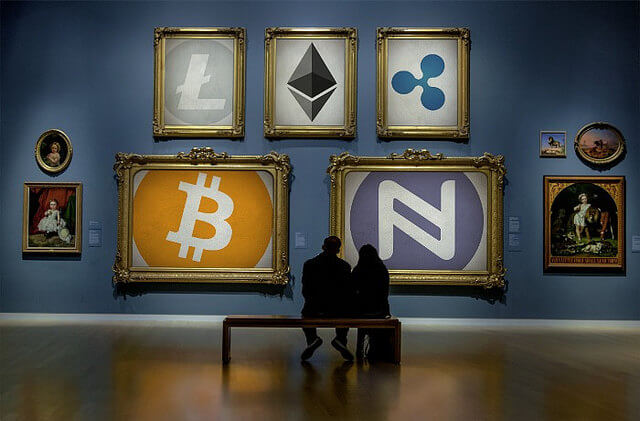How to perform your own due-diligence
before investing in CryptoCurrencies?
One key lesson from Jim Rogers on investing is “to do your own thinking”. This article will help you understand cryptocurrencies. If you are an altcoin investor (An Altcoin is a cryptocurrency which is not Bitcoin), fundamental analysis will help you choose the ones with long-term potential.
How to invest and research in Cryptocurrency, Altcoins and Bitcoin?
All investments have pros and cons. A Cryptocurrency investor needs to look for the cons first, as some are definite deal breakers. If they exist, it is not worth investing more time in researching the crypto-currency.
Finding the right information about Crypto-Currencies is challenging because:
- Concrete info is hard to find or does not yet exist
- Verifying that the source of the information is reliable is challenging
- Understanding the information itself can be beyond the inventors technical understanding. Some layers of technology in new Altcoins are still at white paper stage and not yet proven.
- It takes time to read, understand, question and assimilate.
CryptoCurrency Investing Fundamentals.
What are the core reasons to invest in an Altcoin?
- What problem is the Cryptocurrency trying to solve – what is the use case?
- How big is the problem that the solution is trying to address?
- Have others tried to solve the problem before?
- If they are no longer around why did they fail?
- Is this problem being solved in some other way?
- Are the alternatives to address this problem more efficient?
- In the case of an ICO what does the whitepaper specify and what does it leave out?
- Is the Altcoin structured with central control or a decentralised governance?
- Is the reason for Coin’s existence clear? (In March 2017 Bitcoin has an identity crisis, should it be a store of value or a mainstream currency)
- How much of the price of the cryptocurrency is based on the value being delivered today and how much is it based on future promises of development?
The fundamental reason for a cryptocurrency such as Bitcoin or an Altc oin to exist is to serve its users, the only reason why users will engage with an altcoin is, if it is solving a problem they have. Some Altcoins promise to solve problems we did not know we had, for example, LBRY is creating a pay-to-view content system, while others such as Crown Coin, Dash and deCRED are variants of Bitcoin. They are solving the same key problem in different ways. An investor needs to predict who will be the best at it.
oin to exist is to serve its users, the only reason why users will engage with an altcoin is, if it is solving a problem they have. Some Altcoins promise to solve problems we did not know we had, for example, LBRY is creating a pay-to-view content system, while others such as Crown Coin, Dash and deCRED are variants of Bitcoin. They are solving the same key problem in different ways. An investor needs to predict who will be the best at it.
Others like EDC and iEx.ec are bringing blockchain or decentralisation to problems which have been addressed by centralised solutions. For an Altcoin to have the wind blowing in its sails, it needs to get the very basic core mission both right the functionally, the context and the timing right.
CryptoCurrency Marketing and Branding
an important benchmark for investors
Branding, Marketing and Visibility:
- What is the marketing stance and strategy of the altcoin?
- How sophisticated is the marketing?
- Does the coin have the right branding adapted to the problem it is solving?
- How many times has the altcoin re-branded and why?
- Does the Altcoin use MLM tactics?
- Is the Altcoin know only among cryptocurrency users?
If they do not know about you, you do not exist.
Marketing is everything. Without knowing about a solution, how can that solution be applied to a users problems? Marketing is about informing the market of the solution.
Branding is about the trust between the Cryptocurrency and its potential investors first; actual users usually will come in later. A hyperinflation ultimately occurs because the users of a currency lose trust in it, but the inverse is also true. Hyper re-valuations (Manias?) occur when many new investors want to buy in the belief that the actual users will come in later.
Re-branding is not an uncommon thing in the crypto space, as an altcoin goes through periods of maturation so does its brand image. Frequent re-brandings are a sign of frequent changes of strategy (or trying to hide something). Frequent and recent re-brands throughout an Altcoins life are not a good indication of future strategic decisions.
Media Coverage
Positive mentions in crypto-media outlets such as Cointelegraph.com, CryptoCoinsNews.com and Altcoin Reviews all add credibility to Altcoin when discussed in positive terms.
More street cred is accumulated when the media mentions are outside of the crypto universe. Editorials and articles in Forbes, Bloomberg, Nasdaq add more authority and credibility to an Altcoin. Coverage in general newspapers and news media are indicators of mainstream interest.
Altcoin Social Proof
How many other investors/users believe in the project?
- Who are the whales in the altcoin and what are their intentions? (Not easy to find out!)
- How many Twitter followers does the coin have?
- What is the activity of the coin # tag or $ tag?
- What is the length of the Bitcointalk thread?
(Quality and Quantity matter) - How many visits does the coin website get?
- What is the slack activity and tone?
This is one of the most important metrics to evaluate a cryptocurrency as it is the results of all the other metrics combined.
Coin market cap or the total value of a crypto-coin is also a form of social proof. The total value of a coin is the result of investors voting with their wallets for the coin or against.
Cult Factor
Cryptocurrency developers and spoke persons, give a face to the project, they consolidate information and can be the champions and evangelists. Spreading the idea and solution to the masses. Any U-turn by these coin champions can have serious adverse effects on the coin’s value. These spokespeople become key influencers because naive investors delegate their thinking to them.
When high profile coin spokespersons jump from one bandwagon to other many investors could follow and the results could be cataclysmic.

Altcoin development team and technology
The core value of any project is the functionality of the coin. (and how many people know about it and trust it)
- What is the new tech that the altcoin is developing? (if any)
- Is the technology an informatics one or something else such as a governance model?
- How is the new tech being applied to create a more effective solution to the problem being addressed?
- Can the solution be easily copied?
- What is unique about the team behind this altcoin?
- What are the weaknesses of the development team?
- Are the dev team accessible?
- Are their identities public?
- What is is the tone of their posts on Twitter and Bitcointalk?
Bitcoin has proven itself over and over again, although many have sung to its obituary. Most Altcoins have either modified the Bitcoin’s block chain code or created an entirely new blockchain tech.
New technologies bring new risks. For example, the now famous DAO hack was the product of a bug in a new smart contract technology. Such breakages in the technology can have different impacts. The DAO was destroyed, but in other instances, it serves as a resilience exercise.
In general when something in the cryptocurrency ecosystem “breaks down” it does not help the cryptocurrency investor as mainstream adoption is postponed with each of these negative events.
Price, Market and Exchanges
- Does the price pump and dump cycle make sense?
- Is it connected with actual events that add value to the currency?
- Is all the market rising or just the cryptocurrency in question?
- On what volume was the price increase or decrease done?
- Which exchanges accept the altcoin?
- Is the coin being used by true users or by investor/speculators?
- How many businesses accept the altcoin directly? How many accept it through shapeshift?
AD: Want to learn more about cryptocurrencies try: Cryptoversity
Altcoin pumping and dumping:
Altcoins usually have a core following which are true believers in the project. These believers are a mix of the founders, developers and those with a vested interested in seeing this coin flourish either ideologically, or for monetary reasons. These groups will promote the pros and try to find solutions to the cons.
There will be other groups who market more the disadvantages of a specific coin over the advantages. This group will be made up of believers in the competing coins and those who missed out on the ICO or buying the coin at lower prices.
Some pumps are focused around a certain new feature being released others can be more structural such as regulation changes, a breakdown or an increase in the competition.
Trying to follow the pumps and dumps is the job of the market makers and the day traders. Other investors choose, not to roll with that roller coaster and focus on the long term fundamentals of the cryptos.
Malicious market makers, pump and dump coins while they skim money from both the greedy investor and the fearful investor. The pumps take place through a hype, promises and fear of losing out.
Some pumps are phenomenal for example between Jan and Feb 2017 Dash doubled in price. Such a rise in price needs to be sustained to be of any value to the buy and hold crypto investor. If the prices go up and then comes crashing down, investor confidence erodes each time this takes place.
Can the price of a crypto-currency be manipulated easily by external agents intent on causing harm? This question is more important in the future than today, when investors will be able to invest in cryptocurrency ETFs. When these are approved by the SEC, these ETFs can be used to do naked short selling. This system allows speculators to bet on the downside of a coin, this is done without owning any of the actual coins hence the term “naked”.
Altcoin Economics
- What is the inflation rate or deflation rate of the altcoin?
- How much is Altcoin currency will be generated over time?
- When will the last cryptocurrency be generated?
- Is the altcoin a PoS (Proof of Stake) or a PoW (Proof of Work)?
- If it is a PoS, what was the distribution model?
The economics of an altcoin, determine the supply side of the coin. Coin founders amount to the FED of that specific coin, their behaviour needs to be scrutinised as much as that of any central banker!
Altcoin History
- Is the coin progressing towards its goal?
- How much has it progressed in the past?
- Was the coin insta-mined or pre-mined?
- Was that money put to good use?
- Did the creators announce the exact launch time and date of the coin?
- Was the spec of the coin launched before or after the launch?
- Who are the most prominent proponents and what is their history with the altcoin?
- Who are the most influential critics and what have they commented on the altcoin in the past?
- How has the altcoin changed over time?
Within the history of an altcoin, investors can potentially find the virtues, tantrums and the seeds of greatness or otherwise. To go into an Altcoin’s history, investors need to define what is an Altcoin first.
To me, an Altcoin encompasses the mindset of the founders, the whitepaper, the connection and interaction between the market and the Altcoin developers.
Some Altcoins are scam coins by design, others have good intentions but are implemented badly or too weakly, or the competition is too overwhelming. The past is no guarantee of the future, but the future’s foundations are laid down in the past.

Crypto-Currency Regulation challenges
Regulators have the power to destroy the viability of a cryptocurrency overnight, at least within their own borders. Indeed cryptocurrencies are somewhat resilient to such an attack because of their decentralised design. However, the owners of such cryptocurrencies are not. Probably 99% of cryptocurrency holders are good, law abiding citizens.
If a cryptocurrency is declared, investors holding it will probably dump it. The risk to themselves and families will be too high and impossible to mitigate. There are some variables which increase the power of the regulators and the likelihood of being targeted, for example:
Does an altcoin:
- Focus on a particular market, which is highly controversial?
- Focus on one particular region?
- Allow Anonymous transactions?
- Is popular on the dark web?
- Has been classified as a scam coin?
- Has some mechanism which can be quickly disturbed by regulators? (Ex: A centralised website)
- Is it the infrastructure of the altcoin such as nodes, or mining located within the borders of a particular jurisdiction?
Regulation can also ake an altcoin stronger:
Regulators of particular jurisdictions which maintain the status quo or openly accept BlockChain technology push cryptocurrencies more in the mainstream.
Private forms of public blockchain oversight such as companies which monitor blockchains for illicit activities help regulators and discourage illegal use of cryptos. Others firms rank ICOs (Wings.ai, IcoRating ) and this helps private investors make informed decisions.
Another school of thought considers that all forms of impediments thrown at a cryptocurrency only serve to make it stronger. Cryptocurrencies will evolve and change shape to either outsmart, evade or adopt to regulators. Regulations will act like natural forces which will take the weak out and make the stronger more resilient to outside influences.
Regulators have issues with anonymity, and not privacy, blockchains by default provide privacy, and some cryptos build layers of anonymity on top, this is where regulators are most likely to clash with altcoins. If Altcoins are the new Panama, Governments will do everything in their power to stop their use as illegal tax avoidance vehicles.
Scam Warnings from regulators and rating agencies.
Some governments have issued notices concerning particular cryptocurrencies; this is a sign for investors that such coins need closer scrutiny especially when such announcements target a specific Altcoin rather than the who crypto space.
Investors should take a much deeper look at this altcoin, both because of the regulatory threat itself and the possibility that the altcoin is an outright scam or has MLM (multi-level marketing) or scam like tactics/mechanics.
Centralised / Decentralised Network and Governance
- Is the coin management and network centralised or decentralised?
Centralised / Decentralised are attributes not adjectives. Some attribute centralised, to bad and decentralised to good. Given the spirit of liberty and autonomy in the crypto space, this is a common misconception.
These two attributes have both their pros and cons.
Centralization brings the perils of cult figures and centralised points of attack, but they also bring the benefits of better coordination, deployment of resources and central points of contact for support and media.
Centralisation of development could be a threat to currency. For Example, Monero an anonymous crypto-currency has a public spokesperson. In a recent podcast, he stated that he was worried at times being too much in the limelight. If someone wants to lash out at a certain crypto, the people who are the face of that crypto make prime targets.
deCRED has a decentralised development structure, and this gives it strength regarding towards expanding it’s functionality, but it is more challenging to integrate code coming from different developers.
Most of Crown Coin’s developers are anonymous; this gives potential entities who would like to disturb the coin network much less of a clear target. However, it also brings a question mark about the reputation and expertise of the devs. Having said that, they are very accessible through their slack channel.

Centralised / Decentralised Infrastructure.
A lot of Bitcoin mining power is located in China. Miners swarm around cheap sources of electricity. These mining clusters can create weak links in the blockchain as it opens the hashing power up to attack. Especially within jurisdictions vulnerable to state interference and failures of infrastructure points.
Other points of failure include service nodes, master nodes, super nodes, exchanges and other critical infrastructure points which maintain the coin’s value and the ability of users to exchange the coin or use it.
The Future of Bitcoin or the Altcoin
- How many resources are available to maintain development and marketing of the coin?
- How long will these resources last?
- Does the development team and the marketing team have “skin in the game”?
- Is it short term or long term?
- Are there competing technologies on the horizon threatening block chain as we know it?
- Are there events such as a drop in mining rewards on the horizon?
- What is the extendt of funds tied in masternodes or crypto-bonds?
- Will their release flood the market?
Conclusion:
Investing in cryptocurrency can be done by following the momentum and technical analysis of charts. Does this work? Different people have different levels of success with such strategies, the fundamentals approach to investing has worked for Warren Buffet and there is no reason why it should not work in for cryptocurrency investors. In addition to fundamental analysis dollar cost averaging is also an important investing strategy. Buy low and Sell High!
Jim Reynolds
Tips: Sponsor my addiction to tea and biscuits!
MUE: 7P3J5cJbYgV8zFGp2f5p6pedRCgXKd7fBg
PIVX: DKDPyk7oCqKqPzmLDP4JATk8UcjUFR3wwD
Crown: 1DamFkfncBjkxStMcjx8Fq3SNLenaJrrLQ
Excl: EWvYxcUSgrA8qSSMGQoAMq8f9jvyvkV31P
Transfer: TxL9eupngAZBj5btjFGJhmzQsZep8kw4zf
BTC: 17AfSPgw8ZX81w7uD4jqCf6JT5gDEvAf7R
Dash: Xfd62PhbnPtVoZgPo2it5JHRudR7ps732J
ETH: 0x9ADdA4B2D72E631a1Bbd6c6bc38a0924842240e4
LTC: LdNJzQbTvVmr8qLJ1zTBicsCjEcgw6fuNL
Any comments and help to improve this document would be grealty apprciated.
AD: Want to learn more about cryptocurrencies try: Cryptoversity












![5 Reasons To Retire Early [Idy On Fire]](https://investitin.com/wp-content/uploads/2019/01/594-Arctcle-100x70.jpg)